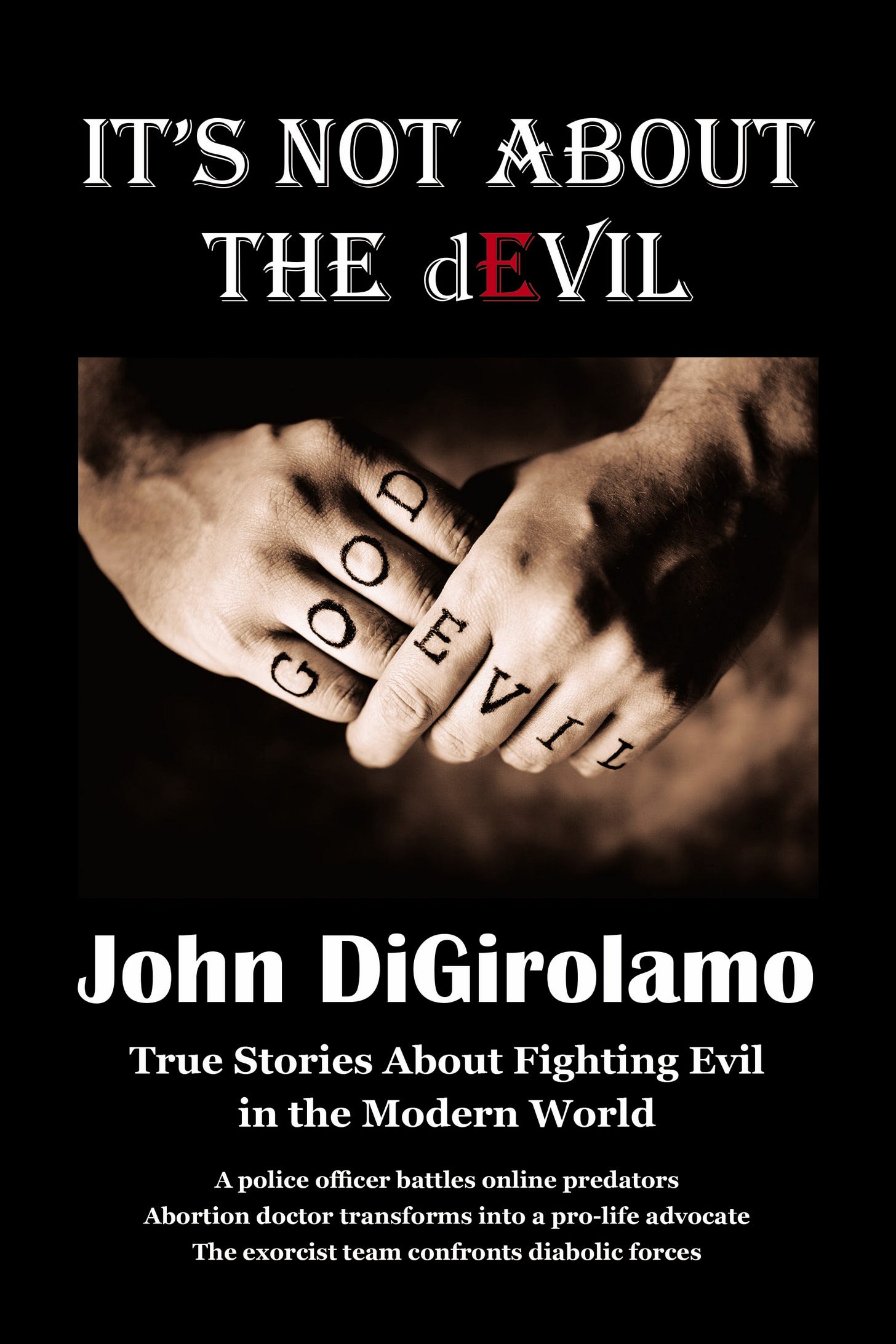It seems there has been a rapid progression of evil over the last few years. We have gone from evil being poo-pooed and spoon fed to our society, to it being placed full-frontal, without push back, inside of our institutions. Just last December, the cornfed, Midwest bastion of Iowa chose to display a satanic statute in the state capitol, during the Season of Advent. What gives?!
From entertainment and pop culture to our day-to-day lives it has spread like a cancer. While you have one extreme that still considers it folk superstition, you have another extreme that has a morbid fascination and avidly traffic in it.
C.S. Lewis said,
“There are two equal and opposite errors into which our race can fall about the devils. One is to disbelieve in their existence. The other is to believe, and to feel an excessive and unhealthy interest in them.”
Author John D Girolamo explores this dichotomy in his latest book, It’s Not About The dEVIL: True Stories About Fighting Evil In The Modern World. In 2021, I covered John’s homage to small town and rural law enforcement, It’s Not About The Badge, and in 2022, I spoke with John about, It’s Not About The Sex, his expose on sex trafficking.
In It’s Not About The dEVIL, John explores this rejection/obsession matrix with evil through the lens of those who seek to combat it. A doctor who felt the evil present when she performed an abortion and is now a pro-life activist; a police officer who traffics among the evil in order to catch online predators; and a priest who performs exorcisms and trains others on how to do the same.
WATCH:
One of John’s subjects is Dr. Catherine Wheeler, who sat down with us to give depth and insight into her experiences. As a medical doctor, Catherine once performed abortions. One day, she performed an abortion where she literally felt the presence of evil in the room. This was the beginning of her turnaround. In her 50s, Catherine came to faith in Jesus and she is now an advocate and a fighter in the pro-life movement.
WATCH:
If there is a particular cultural indication of the increased evil, it is in the championing and celebration of abortion. As my readers know, I consider abortion one of the greatest human rights issue of our time. Yet many people, and particularly some Christians are disconnected from the weight of the urgency, and pay little attention to it. The culture of death fostered by abortion is the connective thread to the rampant and heinous crime we experience, the child abuse that has become commonplace, and the disregard and lack of compassion for our fellow man and woman in everyday circumstances. Abortion is just the tip of the iceberg, and until we return to a culture of life, the fabric of our society will continue to be torn to shreds.
John and Catherine also discussed how our disconnection from each other is one of the main reasons why evil is allowed to gain a foothold.
WATCH:
In a number of ways, people are pushing back against the celebration of evil in our time. It is curious that just a few weeks ago, one shrine to abortion, which many pro-life activists and Christians felt was a physical representation of evil, was vandalized.
Higher Ed News reported about the vandalism and the history of the controversial statue.
A sculpture at the University of Houston, previously protested by some Christian and antiabortion activists, was beheaded Monday, The New York Times reported.
Campus police have footage of a vandal attacking the artwork, university administrators told the artist, Shahzia Sikander.
“It was a very violent act of hate, and it should be investigated as a crime,” Sikander told the Times.
While I am not down with destroying any sculpture, but if free speech has come to mean taking down a statue of President Theodore Roosevelt or confederate soldiers, burning the American flag, or defacing an abortion clinic, then someone beheading this monstrosity as a statement should fall into that category.
The statue, called “Witness,” features an 18-foot-tall woman with thick gold braids that resemble rams’ horns and arms and legs that look like roots. The woman is wearing a hooped skirt with mosaic details and a collar interpreted as an homage to the distinctive lace judicial collars worn by the late U.S. Supreme Court justice Ruth Bader Ginsburg. The sculpture is a temporary installation in the Public Art of the University of Houston System collection.
Antiabortion groups on and off campus objected to the artwork, with some claiming it contained “satanic imagery” and pro–abortion-rights messaging. The university canceled an artist talk introducing the sculpture amid the uproar in February but claimed the decision was unrelated to the backlash.
Sikander told The New York Times that the statue was meant to represent women’s power in the justice system rather than a specific commentary on abortion or Supreme Court justices.
Whatever the intended meaning of the “Witness” installment, we are front row witnesses to the unfolding of evil works in our time. The battle between those who want to foster evil and those who oppose it has never been more clear or more fierce. John and Catherine discussed how the common man can be a force for good in a society that has embraced evil in insidious and overt ways.
WATCH:
I applaud John and Catherine for their courage and commitment to articulate and communicate about this controversial and too-oft dismissed subject. You can find all of John’s books at ItIsNotAbout.com.
















Share this post